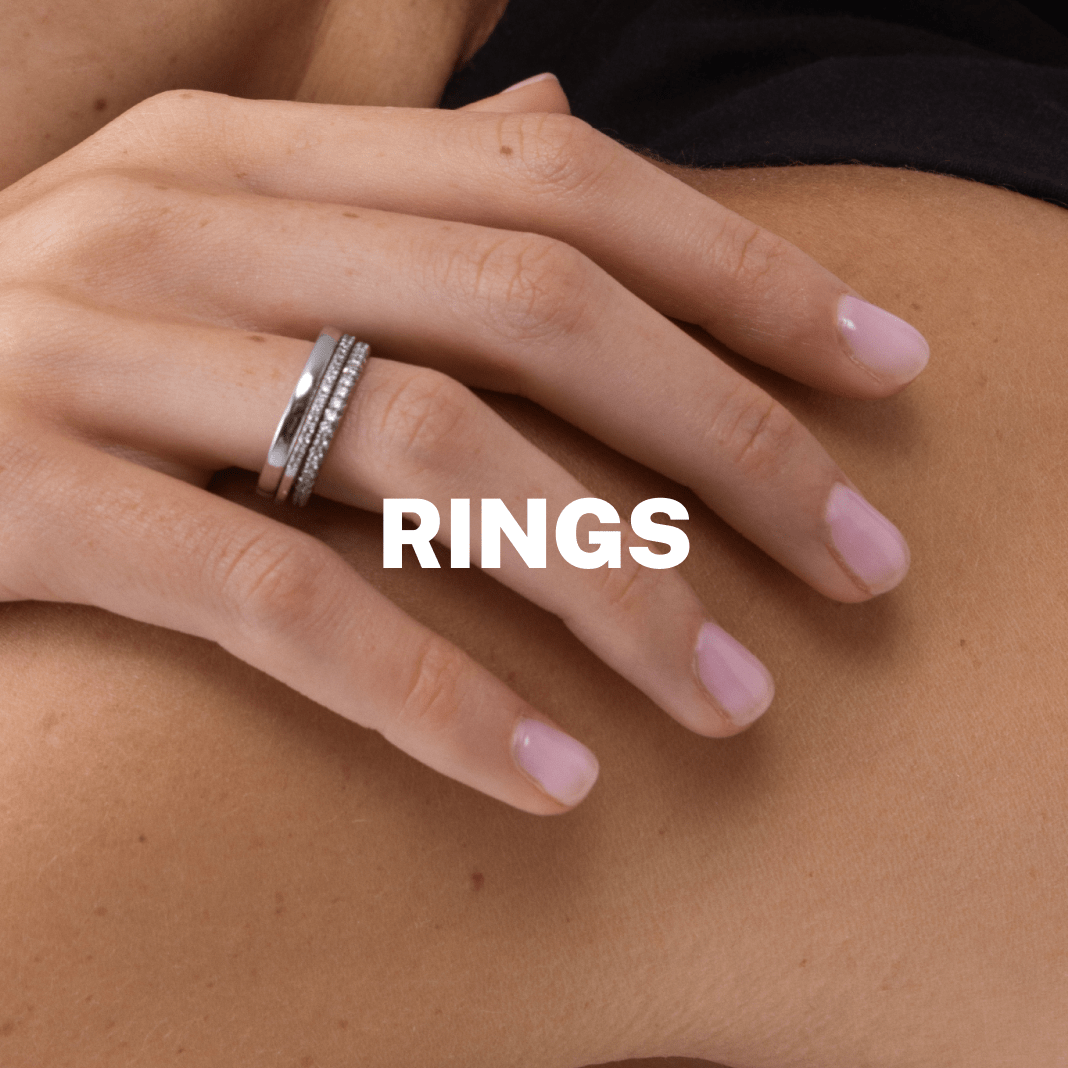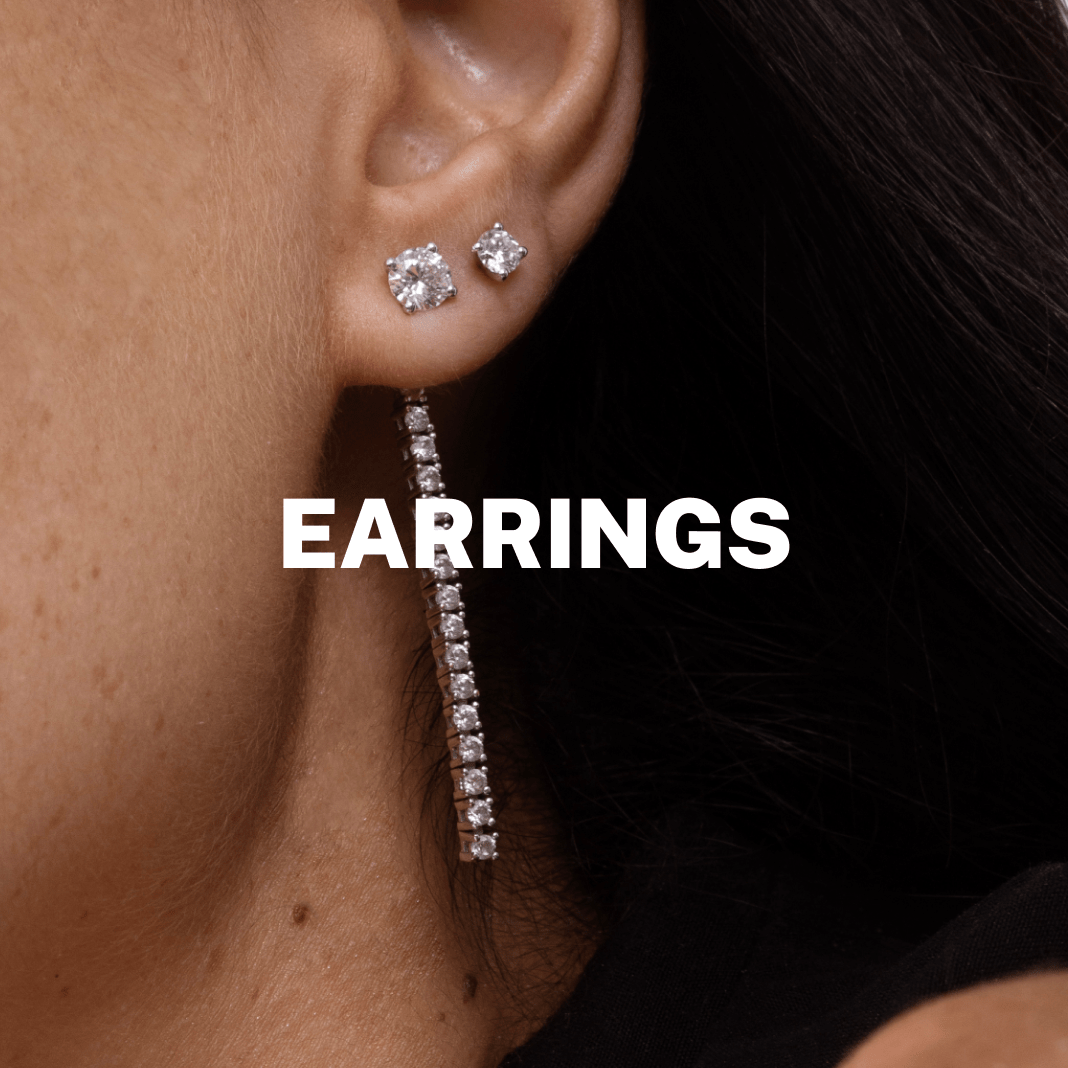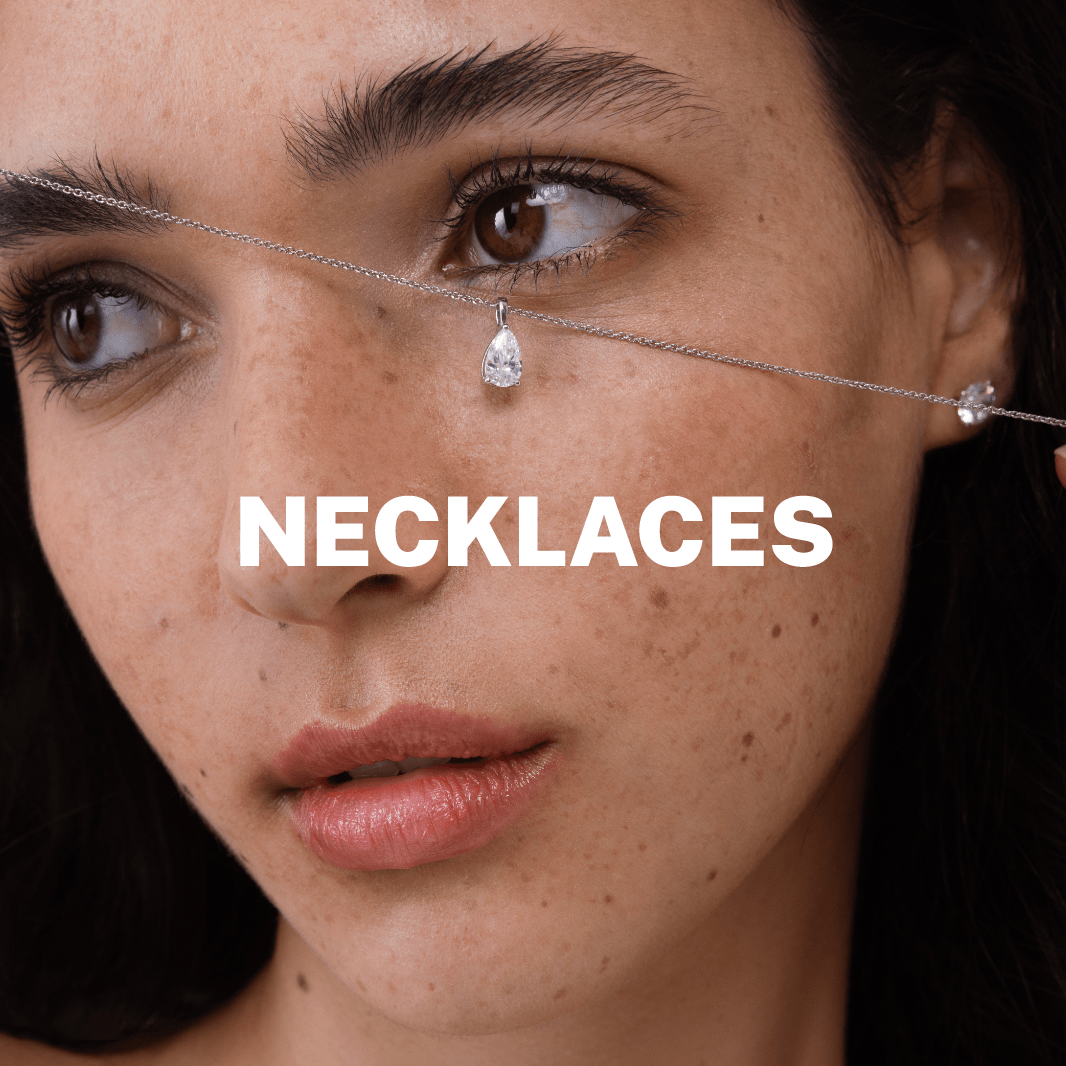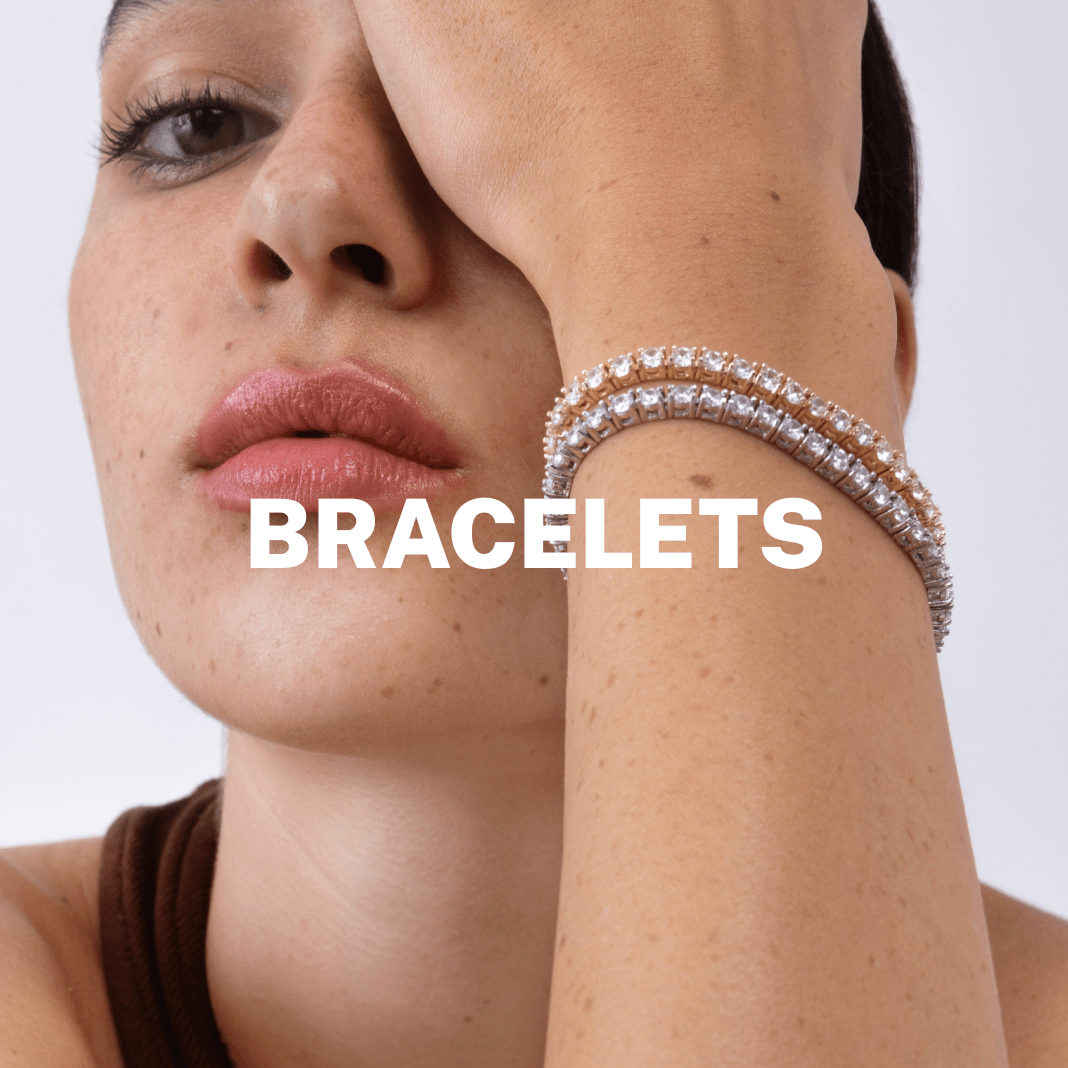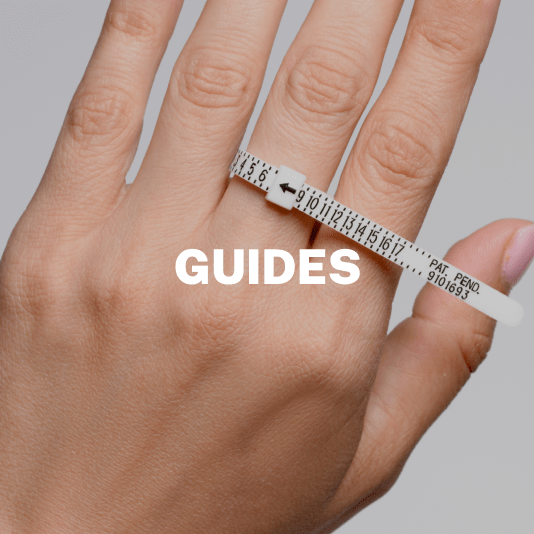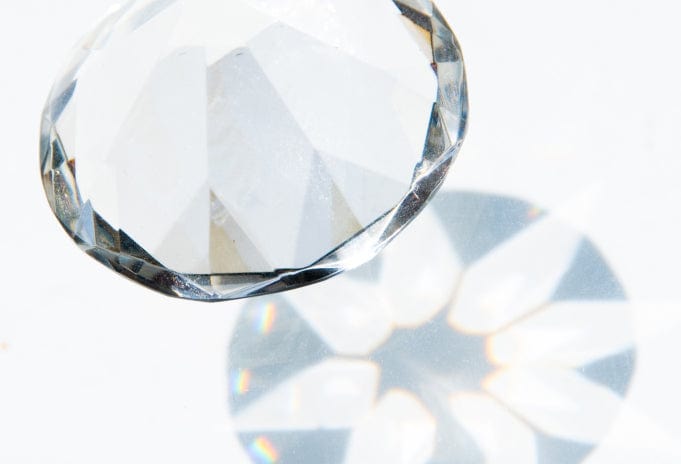
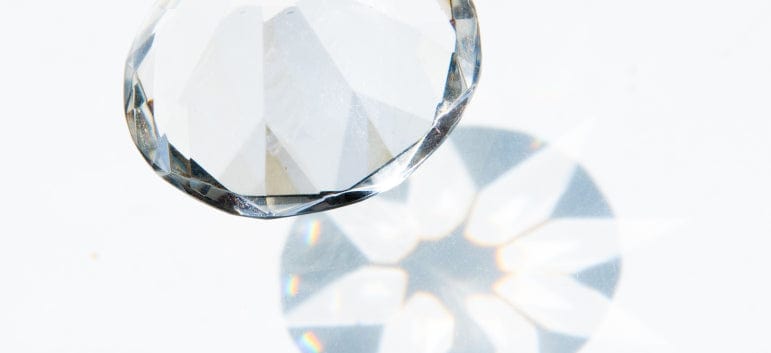
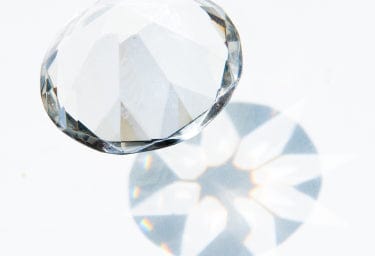
Diamond Clarity Chart & Guide
Diamond Clarity Grading
Diamond clarity is often referred to as diamond quality, but this is only one aspect of a diamond's overall quality. Clarity is graded from FL flawless, to I3 heavily included.
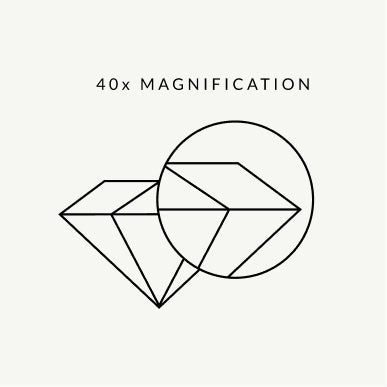
Flawless - VVS
None to very hard to locate imperfections even under 40x magnification.
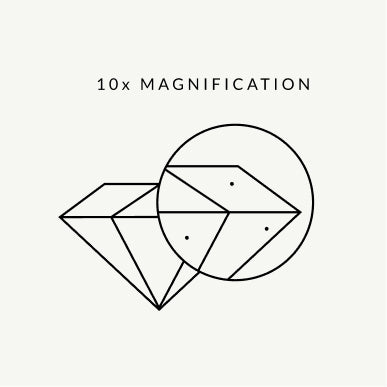
VS1 - VS2
VS1 and VS2 "very slightly included' clarity diamonds have minor imperfections only visible under 10x magnification. This is our standard quality for lab grown diamonds.

SI1 - SI2
SI1 and SI2 clarity diamonds have more easily visible imperfections under 10x magnification. Eye clean and excellent value diamonds. This is our standard for natural diamonds.

I1 - I2 - I3
Also called P1, P2 and P3 clarity. Visible imperfections even without magnification. Not recommended unless expertly selected.
Does Diamond Clarity = Quality?
Brilliance will be determined more by the cut of a diamond than its clarity grade. Only in the lower ranges does clarity affect the brilliance of a diamond. However, you'll definitely want to avoid visible eye sores in your diamond. The best diamond clarity on the scale is FL (flawless), meaning there are no imperfections in the stone, even under 40x magnification. But without magnification, even 3 or 4 grades lower such as VS1 or VS2 can look identical, and a fraction of the cost.
So what's right for you?
A diamond’s purity is one of the key factors when it comes to grading the quality and choosing a diamond. The diamond grading chart below shows the different diamond clarity grades and practical, expert guidance to better understand what diamond clarity can mean for you. The diamond clarity chart below is sorted by the highest clarity, rarest diamonds, to the lowest quality, cheapest diamonds.
Diamond Clarity Chart
|
GIA GRADING |
CLARITY |
DESCRIPTION |
*RULE OF THUMB |
PRICE IMPACT |
|
FL |
Flawless |
No imperfections even under 40x magnification. |
Higher price than is necessary. No benefit over lower grades from VVS2 upwards. |
+ 40%-150% |
|
IF |
Internally flawless |
No internal imperfections even under 40x magnification. |
Higher price than is necessary. No benefit over lower grades from VVS2 upwards. |
+ 35%-120% |
|
VVS1 |
Very very slightly included |
Very hard to locate imperfections even under 40x magnification. |
Most VS1 - VS2 diamonds will look identical to this grade without magnification. |
+ 30%-70% |
|
VVS2 |
Very very slightly included |
Very hard to locate imperfections even under 40x magnification. |
Most VS1 - VS2 diamonds will look identical to this grade without magnification. |
+ 25%-50% |
|
VS1 |
Very slightly included |
Minor imperfections even under 40x magnification. |
Almost guaranteed to be an eye clean diamond, however with larger and step-cut diamonds, it’s recommended to view the stone or ask your jeweler. |
+ 15%-35% |
|
VS2 |
Very slightly included |
Minor imperfections even under 40x magnification. |
Almost guaranteed to be an eye clean diamond, however with larger and step-cut diamonds, it’s recommended to view the stone or ask your jeweler. |
+ 10%-20% |
|
SI1 |
Slightly included |
Minor imperfections under 10x magnification. |
Mostly eye clean diamonds, depending on the size, type and position of the imperfections in the stone. |
AVERAGE |
|
SI2 |
Slightly included |
Visible imperfections under 10x magnification. |
Mostly eye clean diamonds, depending on the size, type and position of the imperfections in the stone. |
- 15%-20% |
|
I1 (P1) |
Included |
Small visible imperfections even without magnification. |
In some cases where the inclusions are scattered and white, a well picked stone can be good value for money. Beware of clean looking diamonds that are hazy or milky. |
- 40%-50% |
|
I2 (P2) |
Included |
Heavily visible imperfections even without magnification. |
Not recommended. |
- 60%-70% |
|
I3 (P3) |
Included |
Heavily visible imperfections even without magnification. |
Not recommended. |
- 70%-80% |
Who's doing the diamond grading?
Clarity grading is by and large subjective to the gemologist that is grading your diamond. There are rules of tolerance based on experience of what is an acceptable range for each of the clarity ratings, however, it’s not uncommon for different appraisers, even from the same lab, to grade a stone differently. Some of the larger labs, including GIA, employ 2 inspections per grading to ensure better consistency. As described above, higher clarity grades can often have visible imperfections whereas a lower grading may not. The range of potential types and the sizes of inclusions increases as we go down the clarity scale, hence more room for interpretation.
Furthermore, different grading institutes may have differing tolerance in their grading when compared to GIA (the largest, world standard for diamond grading). Often it is the case that the smaller labs are slightly more lenient with grading whereas private appraisers and local jewelers will be more stringent, either to stay on the safe side or in some unfortunate cases, to reap business by downgrading diamonds that are not their own.
Types of inclusions

Cloud
Clouds are defined as groups of small, scattered pinpoint or other small inclusions. In most cases clouds cannot be seen with the unaided eye and therefore should not be of concern. A cloud inclusion is different from a cloudy (hazy/milky) diamond.

Hazy
Haziness or milkiness is not shown on the diamond inclusion chart! Under magnification, such diamonds may appear to be of top clarity grading, however, the diamond material itself is more opaque, letting less light through when compared to a regular stone. In rare cases, although not exclusively, very strong fluorescence can cause such haziness in the stone. Usually it’s simply a case of how the stone came out of the earth.

Carbon
While not always specifically marked as such on the certificate, some imperfections such as crystals and pinpoints can come in the form of black carbon spots, rather than white inclusions. Such carbon spots are more likely to be visible to the naked eye.

Feather
Feathers are longer, more angular inclusions that appear like small cracks in the diamond. Unless very large surface feathers, there should be no durability issues with a stone of this characteristic.
Large feathers may be visible to the naked eye as they catch the light at an angle. Surface feathers that are visible to the naked eye can be treated with clarity enhancement to improve the aesthetic of the stone.

Pinpoint
Extremely small specs of black or white crystal inside the stone, that are usually only visible under 10x or 40x magnification

Twinning Wisps
Lines and random patterns of feathers and crystals grouped together. In many cases as these are scattered inclusions, they won’t be visible to the naked eye unless large and in a densely covered area of the stone.
When we select diamonds for your order, we use our decades of experience in looking at real diamonds - not just looking at certificates or magnified videos online. When you select any diamond jewelry from our collection, it's guaranteed to be eye clean.
Determining Eye Clean
For best value for money, you’ll want to aim for diamonds that are the lowest in price without any visible compromise on the diamond clarity to the naked eye (without magnification). However, looking at the ‘on paper’ diamond clarity rating alone won’t tell you the whole story.
It’s possible to have a VS2 diamond that is not eye clean and an SI2 diamond that is. Determining an ‘eye clean’ clarity diamond therefore can be tricky.
There are 4 main factors that need to be considered when trying to determine whether a diamond is eye clean:
- Carat weight and size of the diamond
- Diamond shape and cut type
- Type, position and size of the inclusions
- Which certificate issued the diamond grading
Large vs Smaller Diamonds
On the one hand, the lower the carat weight and the smaller the diamond, the more difficult it is to see any difference between the diamond clarity grades. On the other hand, the difference in price between these smaller stones is relatively a small dollar amount.
As we increase the carat weight of a diamond, the more likely it will be that the inclusions may be visible to the naked eye. This is because the clarity of diamonds is rated relative to the carat weight. So the same relatively small inclusion on a 5 carat stone would be quite large on a 1 carat. It’s also easier to see such inclusions as the facets of a larger diamond provide a larger surface area for reflecting the internal imperfections. With a smaller diamond, the smaller facets will better distort any imperfections as the light bounces around the inside of the stone and creates the sparkle effect when viewed. This will mostly be relevant when looking at VS1-SI2 diamonds. From VVS2 upwards you’re guaranteed to have an eye clean diamond, no matter what.
Larger diamonds, however, more significantly increase in price as we go up the diamond clarity scale. Both in terms of dollar value and percentage. This is true for all of the 4 Cs such as diamond color and diamond cut. The rarer and more expensive the stone, the higher the increase for each additional upgrade to its quality.
Brilliants vs Step Cuts
Even if we have the same on paper grading, and the same carat weight, there can be a significant difference in what’s visible or not to the naked eye, just because of the way the diamond has been cut. For this purpose, we’ll group the diamonds between two main groups; brilliant and step cuts.
Brilliant cut diamonds:

Step cuts:

With step cut diamonds, it's not uncommon for high grade VS1-VS2 diamonds to have visible imperfections, especially with larger stones when the inclusion is towards the center of the diamond's table. Brilliant cut diamonds can get away with more significant inclusions and still stay invisible to the naked eye.


Diamond Clarity FAQs
Does diamond clarity affect sparkle?
Diamond sparkle is influenced by several factors, with cut grade, polish, and symmetry being the most crucial. While these elements primarily determine the stone's brilliance, the raw material and occasionally, fluorescence, can also play a role. Extremely low clarity diamonds are less likely to exhibit optimal sparkle.
What does high clarity mean in a diamond?
Clarity enhancement involves a treatment that improves a diamond's clarity grade, while high clarity typically refers to diamonds that are at least eye clean. On the clarity scale, high clarity grades range from Flawless to VS1.
Are inclusions in diamonds always visible?
Inclusions are generally microscopic and not visible to the naked eye, especially in higher clarity grades. At Shiree Odiz, we meticulously select only eye-clean diamonds to ensure the utmost quality.
Is it worth investing in high-clarity diamonds?
Investing in a diamond with at least eye-clean clarity is usually sufficient for aesthetic purposes. Beyond that, while the price and value will increase, the aesthetic difference becomes minimal. For step-cut diamonds, a higher clarity grade is often advisable to ensure they are eye clean.
How do I prioritize between carat, cut, color, and clarity?
Prioritizing between carat, cut, color, and clarity depends on individual preferences and budget. To maximize quality, aim for a D-H color range when setting in white gold and D-J for yellow gold, along with at least an excellent cut. Then, choose a diamond that's eye clean but don't overpay for higher clarity grades.
Should I choose a higher clarity grade if I can afford it?
Your priorities will guide your choice in clarity. Whether you focus on carat weight, price, or quality, an eye-clean diamond usually suffices for most people. In the Flawless to VVS2 range, there's no substantial aesthetic benefit over an already eye-clean diamond. However, lab-grown diamonds offer the option to go higher in clarity at a relatively lower cost.
